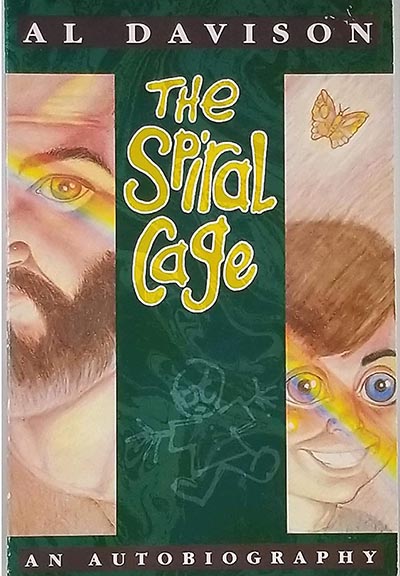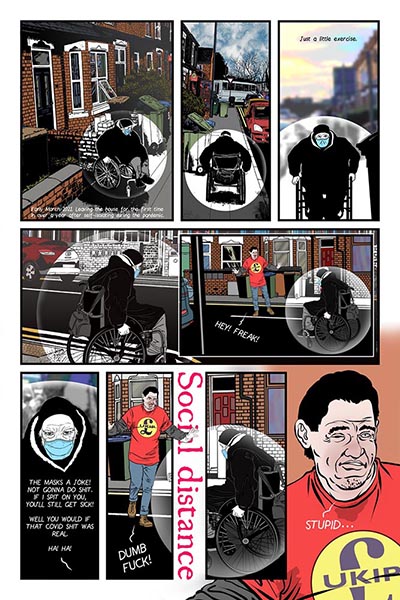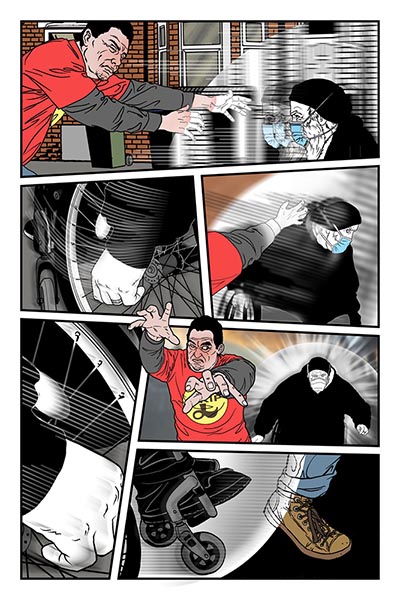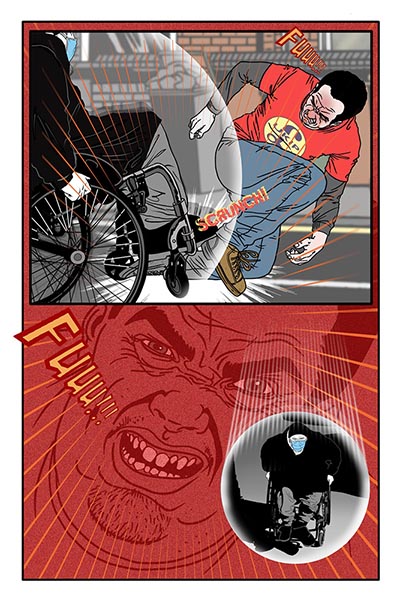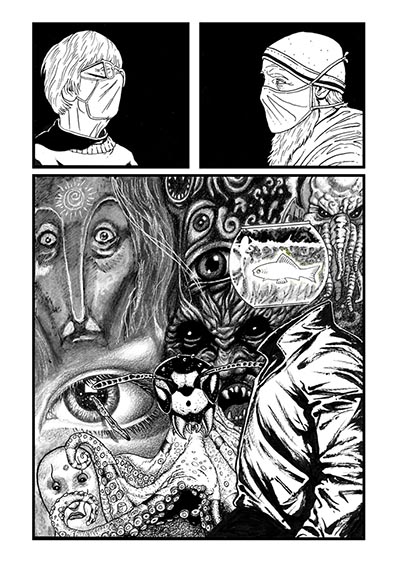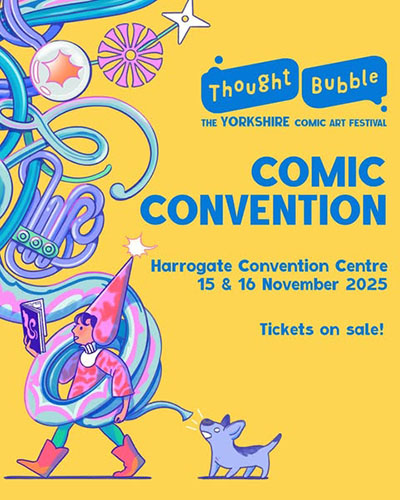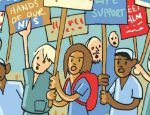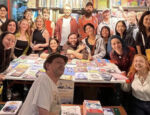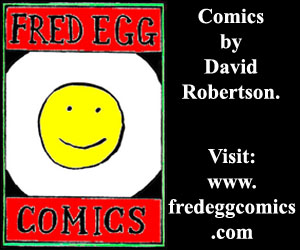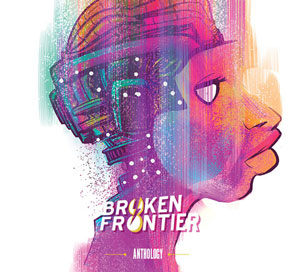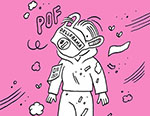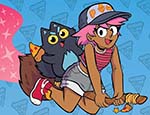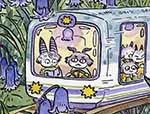THOUGHT BUBBLE MONTH 2025! An early entry in the graphic medicine area of comics, Al Davison’s The Spiral Cage was first published in 1988 and followed his life living with spina bifida. It remains a highly influential and groundbreaking graphic memoir and Davison has followed it up with a sequel Muscle Memory: A Survivor’s Story, currently available on his Patreon. Davison’s career has taken him across multiple comics genres, from DC’s Vertigo imprint to the licensed worlds of Doctor Who. Ahead of his appearance at this year’s Thought Bubble I caught up with Al to chat about the importance of The Spiral Cage, his long career in the medium, and his current work on Muscle Memory…
ANDY OLIVER: In an age where graphic medicine and graphic memoir are commonplace it is perhaps easy to forget how groundbreaking The Spiral Cage was in its time. What were the challenges you faced in getting the book in front of readers back then?
AL DAVISON: Much the same as they are now. The subject matter was considered ‘difficult’, and not commercial. Luckily Deni Loubert at the sadly defunct Renegade Press, saw the potential, and published a short version, unfortunately there were issues with the binding, so it didn’t get much of an outing before the publisher closed shop. Mike Lake championed it at Titan after Alan Moore, Bill Sienkiewicz, Bryan Talbot and others sang its praises. After Mike’s departure, Titan went ahead and published an expanded version, but even then there was some strong ableist pressure from certain quarters to ‘sanitise’ it, and give it a more tragic ending. I resisted that pressure, and had the full support of my editor. There have been subsequent editions, including amongst others Active Image.
AO: In recent years you have been working on your webcomic Muscle Memory: A Survivor’s Story. How does that work as a sequel to The Spiral Cage, what are you looking to explore thematically in its pages and what are the advantages of publishing it online as a webcomic?
DAVISON: I’ve been working on Muscle Memory on and off (between paying gigs) for around 25 years. The book covers some of the same ground as The Spiral Cage, but also addresses my surviving systematic physical/ritualistic childhood abuse at the hands of my father, which I couldn’t write about when my parents were still alive. It also looks at disability hate crime, something I continue to have to deal with on a daily basis, and the political landscape that has lead to a huge escalation in these crimes.
We started funding Muscle Memory a few years ago via Patreon, and are still doing so. (Just finishing up the epilogue and we will be done). I received funding via Unlimited, a brilliant disability arts organisation, to create a dedicated site for the work, and develop some multi-media aspects to make it more accessible. The main reason to go online, though, was simply to get the work seen. It had been turned down by a number of publishers, for numerous reasons, from the purely financial, to ‘dealing with disability and abuse is too much, stick to one or the other’, and ‘We can’t picture who the audience would be for this’. I was getting frustrated, so going online seemed a good idea, though the reach hasn’t yet been what we hoped for. Still hoping someone will pick it up for a physical edition.
AO: Muscle Memory is a very powerful piece of comics. What have been some of the most memorable reader reactions to it to date?
DAVISON: We have only been live for a relatively short time. But it’s fascinating how many people react with total disbelief that disability hate crime is an actual thing, and are shocked at the level of it. Prior to the recent huge spike in both Islamophobic and Antisemitic hate crimes, disabled people were the biggest target for hate crime in the UK, seeing a huge increase after the initial introduction of austerity, and again after Brexit. It continues to grow.
AO: Can you give us some insights into your creative process and the mediums you work in?
DAVISON: In the early 90s I had issues with my arm, spasms and cramps, the doctors said I’d have to give up drawing, and ended up finishing one series with my left hand. Luckily we spoke to an occupational therapist, who suggested I try a graphic tablet and a Mac, I could adjust the pressure so I wouldn’t have to grip the pencil so hard. That was a game changer. So now I have a hybrid process, I do the pencils digitally and print them out, then I ink traditionally, as I don’t need to grip the brush/pen as hard. I then either scan and colour them digitally, paint traditionally, or a combination of the two. My preferred painting mediums are watercolour, gouache and acrylics. Digitally I use a combination of Clip Studio, Procreate, and Affinity.
AO: You’ve done a lot of genre fiction-based comics work over your long career including work with Vertigo and on Doctor Who. What have been some of your career highlights in that regard for you?
DAVISON: I always felt like Vertigo was my natural artistic home. Working with Alisa Kwitney, Karen Berger, Shelly Bond and all the creators there, was definitely a high point for me. Working on The Unwritten with Mike Carey, Peter Gros,. Chris Chucky, Yuko Shimizu, Todd Klein, Pornsak Pichetshote and the numerous other creators was a great experience. Doctor Who with Tony Lee, Lovern Kindzierski, Robbie Robins and Denton. J. Tipton for IDW, was also great fun, though the extra layer of editorial on it as a licensed book was often challenging. I also loved working with Leah Moore and John Reppion, especially as it was M.R. James’ ‘Oh, Whistle and I’ll Come to You My Lad’, for SelfMadeHero. That was two items ticked off my bucket list!
AO: We live at a time when comics showcasing the stories of marginalised voices have never been more important. What is it about the medium for you that makes it such a strong one for communicating lived experiences?
DAVISON: I think it’s the unique combination of accessibility and immediacy, combined with the ability to stay with a moment or experience and absorb it at your own pace.
AO: What next for Al Davison? What are you working on next?
DAVISON: I always have multiple projects on the go.
As well as finishing up Muscle Memory, I’m working on a new book: Sojourner based on the works of Edgar Allan Poe, that I started during lockdown to stay sane.
The Ticking Boy and other Criptids I have known: An art book (the spelling with two ‘i’ s is deliberate) based on my imaginary childhood friends and mythical creatures that I had in common with other children with disabilities in hospital and at school.
Geordie Sugden: A Canny man. A folk horror book based on stories told to me as a child by local canny folk in Newcastle (the Geordie version of cunning folk).
I’m also 25 000 words into my first prose novel Alathea a folk horror story set in the North East, and putting some zines together along with my friends Nathan and Abi Moore.
All these are on spec, so any interested publishers/agents…
Interview by Andy Oliver
Visit Al Davison’s Patreon here
Al Davison will be at Table A6 in the Comixology Hall at Thought Bubble.
Thought Bubble 2025 runs from November 1oth-16th with the convention weekend taking place on the 15th-16th. More details on the Thought Bubble site here.
Read all our Thought Bubble 2025 coverage so far in one place here.
Poster by Ng Yin Shian





